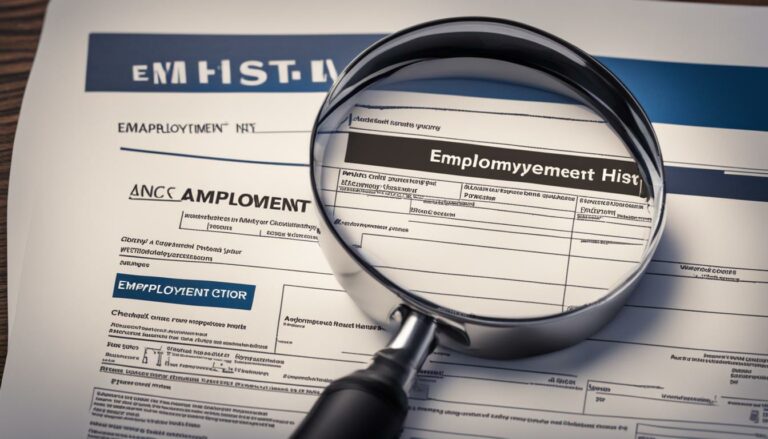Paws, Properties, and Practicalities: Exploring 6 Key Factors in Pet-Friendly Living Spaces
Hey there, Federico Calderon here…
If you’re a landlord or a new property manager, the decision to allow pets in your rental units can feel like a tricky balancing act.
You might wonder about the potential wear and tear versus the undeniable appeal to a broader range of tenants.
In this blog, I’m going to walk you through the key factors to consider – from understanding the types of damage pets can cause to recognizing the undeniable benefits of a pet-friendly policy.
Together, we’ll explore how you can smartly navigate pet policies to not only protect your property but also enhance its appeal in the rental market.
Let’s dive in and unravel the complexities of managing a pet-friendly rental space…
Factor #1: Damage Types and Costs
Pets, as delightful as they are, can inadvertently cause damage to rental properties. The type of damage can range from scratched floors and damaged doors to chewed fixtures and stained carpets.
The repair costs for such damages can differ significantly based on the severity of the damage and the specifics of the property. For instance, repairing deep scratches on hardwood floors or replacing a chewed piece of furniture can incur substantial costs. As a landlord, it’s crucial to be aware of these potential damages and factor them into your pet policy and property maintenance plans.
How To Manage the Potential for Pet-Related Damage?
begins with proactive measures. Firstly, consider the type of flooring and fixtures in your property; opting for more durable materials can reduce the risk of severe damage.
Implementing a pet policy that includes a detailed assessment of the pet’s breed, size, and behavior can also be helpful.
Additionally, requiring a pet deposit or pet rent can provide financial coverage for any potential damages.
Regular property inspections and fostering open communication with your tenants about pet care and property respect can further mitigate these risks. Remember, the goal is to balance pet friendliness with property preservation.
Factor #2: Wear and Tear vs. Significant Damage
Pets inevitably contribute to the normal wear and tear of a rental property, but it’s crucial to distinguish this from significant damage.
Normal wear and tear, a natural aspect of property aging, can be slightly accelerated by pets through minor scratches or general use.
However, significant damage, such as deep scratches in wood floors or torn carpets, is a different story. These instances of damage are more severe and can lead to considerable repair costs.
As a property manager, understanding and identifying the difference between these two is key to effectively managing your rental property and maintaining its value over time.
How To Avoid Significant Damage?
Effectively managing and trying to avoid significant damage starts with clear guidelines in your lease agreement, everything is negotiated from the get go.
Specify what constitutes normal wear and tear and what falls under significant damage, especially in the context of pet-related incidents.
Regular property inspections can help you monitor the condition of the property and address any issues early on. Additionally, setting aside a maintenance fund for inevitable wear and tear can help manage these costs without financial strain.
For significant damage, a pet deposit or pet rent can provide a financial buffer. Educating tenants about responsible pet ownership and property care can also minimize the risk of significant damage, ensuring a harmonious relationship between pet-friendly policies and property maintenance.
Factor #3: Deposits and Pet Rent
When it comes to managing a pet-friendly rental, one effective strategy is the implementation of additional deposits and pet rent. This approach is widely used by landlords to mitigate the financial risks associated with potential pet damage.
The extra deposit acts as a safety net, providing funds that can be used for repairs if any pet-related damage occurs.
Similarly, pet rent is a monthly charge added to the rent, offering ongoing coverage for the general wear and tear that pets might cause over time.
Both of these methods serve as a financial cushion, ensuring that pet-related expenses don’t become a burden on your property’s profitability.
How To Implement Deposits and Pet Rent?
Implementing pet deposits and pet rent requires a careful balance. It’s essential to determine a reasonable amount that covers potential risks without discouraging potential tenants.
Start by researching local regulations and market standards for pet deposits and additional rent. These charges should be clearly outlined in your lease agreement, specifying the terms and conditions.
It’s also important to communicate openly with your tenants about these fees, explaining their purpose and how they contribute to the maintenance of the property.
By transparently and fairly integrating these costs into your rental agreement, you can protect your investment while maintaining a pet-friendly environment.
Want to Learn more? view our Our Ultimate Marketing Plan for Listing Rental Properties
Factor #4: Variability by Pet Type and Breed
The impact of pets on rental properties isn’t a one-size-fits-all scenario. It varies widely depending on the type of pet, breed, size, and behavior.
For example, larger dog breeds might pose a greater risk for wear on flooring due to their size and energy levels, compared to smaller pets or cats.
Understanding these variances is crucial in crafting a pet policy that’s fair and considers the specific risks associated with different types of pets.
This knowledge allows for more informed decisions about what kinds of pets to allow in your rental property and under what conditions.
How To Account for Variability in Pets?
Accounting for the variability in pets involves a few key steps.
First, consider creating a pet policy that categorizes pets based on their potential impact on the property. This might include setting different rules or fees for larger breeds versus smaller ones.
View our Guide for Landlords and Tenants on Pet Policies
It’s also wise to conduct a pet interview or screening to assess the pet’s behavior and training. Just as you screen tenants, understanding a pet’s temperament and habits can help predict their impact on your property.
Additionally, consider asking for a pet reference from previous landlords to ensure the pet has a history of being well-behaved in rental settings.
By taking these factors into account, you can develop a pet policy that’s both fair and mindful of the unique challenges different pets might present.
Factor #5: Cleanliness and Maintenance
Maintaining a pet-friendly rental property isn’t just about setting rules; it’s also about regular cleanliness and maintenance to mitigate the effects of pet-related wear and tear.
Consistent cleaning efforts, like frequent vacuuming, can significantly reduce the accumulation of pet hair and dander, which can affect the property’s overall cleanliness and air quality.
Utilizing protective covers on furniture and ensuring pets are well-groomed can also minimize the impact on your property. These proactive measures play a pivotal role in preserving the condition of your rental over time, reducing the need for extensive repairs and maintenance, this involves a collaborative approach between tenants and property managers / landlords.
How To Ensure Effective Cleanliness and Maintenance
This requires a combination of tenant cooperation and regular property checks. Encourage tenants to maintain a clean environment, perhaps by providing guidelines on pet care and cleanliness.
View our Guide for Landlords and Tenants on Pet Care and Cleanliness
You might also consider periodic inspections to ensure the property is being well-maintained.
Remember, maintaining a clean and well-kept property is not only beneficial for its longevity but also enhances its appeal to future tenants.
Factor #6: Positive Aspects of Pet-Friendly Properties
While considering the implications of allowing pets in rental properties, it’s equally important to recognize the significant benefits.
Pet-friendly properties often appeal to a larger pool of potential renters, as a considerable number of tenants own pets or wish to in the future. This broader appeal can lead to higher demand and potentially higher rent rates.
Furthermore, tenants with pets tend to stay longer in a rental, as moving with pets can be challenging and pet-friendly accommodations are in high demand.
This longer tenancy reduces turnover rates, which is a key factor in maintaining steady rental income and reducing the costs associated with finding new tenants.
Benefits of Accepting Pets in Short-Term Rentals
Accepting pets in short-term rentals can offer numerous benefits for property owners.
How it works? read from the Air BNB blog about Accepting Pets
Firstly, it broadens the potential tenant pool, as pet owners often struggle to find accommodations that welcome their furry friends.
This inclusivity can lead to higher occupancy rates and potentially higher rental rates.
Furthermore, pet-friendly properties are likely to attract repeat guests who appreciate the convenience of traveling with their pets.
Additionally, pet owners are often willing to pay additional fees for their pets, providing an extra revenue stream.
By allowing pets, property owners position their rentals as more attractive and accommodating, appealing to a wider range of guests.
How To Maximize the Benefits of Pet-Friendly Properties
It’s crucial to market your rental accordingly.
Highlight the pet-friendly aspect in your listings and showcase any pet-specific amenities like a fenced yard or nearby dog parks.
Additionally, consider creating a welcoming environment for pet owners by providing resources like local pet care information or organizing pet-friendly community events.
These efforts not only attract pet owners but also foster a sense of community, making your property more appealing.
Remember, embracing the pet-friendly market can be a strategic move, potentially leading to higher profitability and tenant satisfaction in your rental business.
Key Takeaways
Hot Takeaway
Are you Ready to Transform your Rental Properties into Sought-After Pet-Friendly Living Spaces?
Think about the potential: higher demand, possibly higher rents, and longer tenant stays.
But,
are you prepared to balance this with smart policies for pet-related wear and tear?
Embracing a pet-friendly approach can be a game-changer for your rental business, opening doors to a larger market while ensuring your property remains well-maintained and profitable.
In conclusion, while allowing pets in your rental property comes with its considerations, the benefits can be substantial.
By implementing thoughtful policies and maintaining open communication with your tenants, you can create a harmonious and profitable rental environment.
Embracing the pet-friendly market not only enhances the appeal of your property but also positions you as a forward-thinking, tenant-friendly landlord in today’s competitive rental landscape.
Cheers to your success in the dynamic world of property management!
Federico Calderon
Embark on your property management journey with Federico Calderon, a seasoned expert with 18 years in the real estate and property management sector. Known for revolutionizing the approach to property management, Federico brings a wealth of innovative strategies and insights to every project.
More than just managing properties, Federico is dedicated to creating exceptional management experiences, blending professional wisdom with a unique flair. His keen understanding of market dynamics ensures your property is managed efficiently and profitably, resonating with the harmony of a well-orchestrated plan.
Looking for top-notch property management with a touch of enthusiasm? Federico is your go-to professional – a property manager who combines serious expertise with a zest for the industry!






